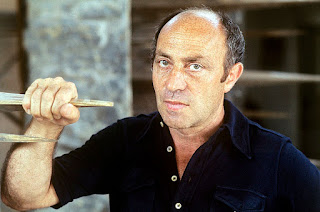Aldo Serena - footballer
Azzurri striker left field in tears after penalty miss
Aldo Serena, one of the two Italian players who most felt the agony of defeat after the Azzurri suffered the pain of losing at the semi-final stage when the football World Cup last took place on home soil, was born on this day in 1960 in Montebelluna, a town in the Veneto. The match that ended the host nation's participation in the Italia '90 tournament took place in Naples against an Argentina side that included the local hero, Diego Maradona. It was decided on penalties after finishing 1-1 over 120 minutes. Italy converted their opening three penalties, as did Argentina. Then Roberto Donadoni’s shot was saved by the Argentina goalkeeper, Sergio Goycochea. Up stepped Maradona, who scored, to the delight of many in the crowd who had divided loyalties. Suddenly, everything was down to Aldo Serena, who could not afford to miss if Italy were to stay alive in a tournament in which they had played football at times that deserved to win. Serena, the Internazionale striker, had been a fringe player for Italy throughout the tournament, picked only as a substitute, although he had scored in that capacity against Uruguay in the round of 16 – on his 30th birthday. Read more…
______________________________________
Marta Abba - actress
Aspiring star who became Pirandello’s muse
Marta Abba, who as a young actress became the stimulus for the creativity of the great playwright Luigi Pirandello, was born on this day in 1900 in Milan. The two met in 1925 when Pirandello, whose most famous works included the plays Six Characters in Search of an Author (1921) and Henry IV (1922), asked her to see him, having read an enthusiastic appreciation of her acting talents by Marco Praga, a prominent theatre critic of the day. Abba had made her stage debut in Milan in 1922 in Anton Chekhov’s The Seagull and was noted for the exuberance and passion of her performances. Pirandello was impressed with her and immediately hired her as first actress for his Teatro d’Arte company in Rome. Over the next nine years until Pirandello’s death in 1936, Abba would become not only his inspiration but his confidante. When Abba was not working with him but was on stage in some other city or country, they would correspond in writing, exchanging hundreds of letters. There was a considerable age gap between them - Abba was 24 and Pirandello 58 when they met - and their relationship was complex and not always harmonious. Read more…
______________________________________
Francesco Domenico Araja - composer
Brilliant musician introduced Italian opera to Russia
Francesco Araja was the first in a long line of Italian composers to work for the Imperial Court in St Petersburg in Russia. Born on this day in 1709 in Naples, then in the Kingdom of Sicily, Araja received a musical education in his native city and was composing operas by the age of 20. He made history as the composer of the first Italian opera to be performed in Russia and as the composer of the first opera with a Russian text. It is thought that Araja was probably taught music by his father Angelo Araja and his grandfather Pietro Aniello Araja, who were both musicians. He was appointed maestro di cappella at the church of Santa Maria La Nova in Naples at the age of just 14. Araja’s early operas were staged in Naples, Florence, Rome, Milan and Venice. His opera Berenice was performed in Florence in 1730, with the famous castrati, Farinelli and Caffarelli, singing the main roles in a new production in Venice in 1734. He was invited to St Petersburg in 1735 with a large Italian opera company and became the maestro di cappella to Empress Anna Ioannovna, and later to Empress Elizaveta Petrovna. Read more…
____________________________________
Elena Cornaro Piscopia – philosopher
First woman to graduate from a university
Elena Cornaro Piscopia became the first woman to receive an academic degree from a university on this day in 1678, it is believed, in Padua. She was awarded her degree in philosophy at a special ceremony in the Duomo in Padua in the presence of dignitaries from the University of Padua and guests from other Italian universities. Piscopia was born in a palazzo in Venice in 1646. Her father had an important post at St Mark’s and he was entitled to accommodation in St Mark’s Square. On the advice of a priest who was a family friend, she was taught Latin and Greek when she was a young child. She was proficient in both languages by the time she was seven. She then went on to master other languages as well as mathematics, philosophy and theology. Her tutor wanted her to study for a degree in theology at Padua University but the Bishop of Padua refused to allow it because she was female, although he allowed her to study philosophy instead. On the day of her degree ceremony Piscopia demonstrated her brilliance in front of the specially invited audience by explaining difficult passages from Aristotle in faultless Latin. Read more…
Booking.com
.jpg)

.jpg)







.jpg)


.jpg)


